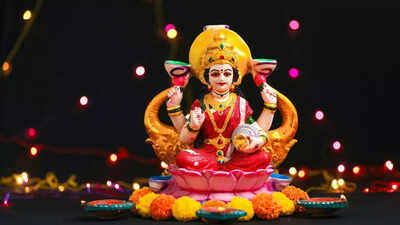ARTICLE AD BOX

India is preparing to celebrate one of its most significant festivals-- Diwali-- on October 20, 2025. Known as the festival of lights, Diwali is observed with prayers, lighting diyas, decorating homes, and, most importantly, performing Lakshmi Puja in the evening hours. This sacred ritual is believed to bring prosperity and peace into homes, making the timing of the puja a matter of great importance.This year, with Amavasya aligning closely with the puja muhurat, October 20 has been confirmed as the most suitable day for Lakshmi Puja. Here's what you need to know.
आचार्य विक्रमादित्य से जानिए | दीवाली पूजा की सही विधि और यम दीपक का चमत्कार | Diwali 2025
Diwali 2025: Date and Amavasya Tithi

As both Pradosh Kaal and Nishita Kaal fall on October 20, astrologers have confirmed that this day is the most auspicious for performing the evening rituals associated with Lakshmi Puja.Lakshmi Puja Muhurat on Diwali

This one-hour-ten-minute period is considered ideal for the puja, aligning with the evening Pradosh Kaal-- a time traditionally reserved for major religious observances.
Lakshmi Puja Rituals: How the Diwali evening is traditionally observedThe puja is carried out with traditional customs to invoke the blessings of Goddess Lakshmi, the deity of wealth and prosperity, along with Lord Ganesha and Kuber Dev.Here’s a brief outline of the common rituals followed during Lakshmi Puja:Preparations begin with cleaning the houseIt is customary to clean homes thoroughly before the puja. This is believed to symbolise the removal of negativity and is seen as a way to welcome Goddess Lakshmi.
Many families also decorate the entrance with rangoli, flowers, and earthen lamps (diyas) to mark the occasion.Setting up the puja space

A clean platform is prepared for the idols or images of Goddess Lakshmi, Lord Ganesha, and Kuber. A red or yellow cloth is often used as a base, and the idols are placed facing the family.Essential puja items such as kumkum, turmeric, sandalwood paste, betel leaves, sweets, coins, incense sticks, and a kalash (sacred water vessel) are arranged neatly.Performing the pujaThe puja begins by invoking Lord Ganesha, followed by prayers to Goddess Lakshmi. Devotees chant mantras and recite her names. Flowers, sweets, and coins are offered during the prayer.The Lakshmi Aarti is performed as part of the main ritual, accompanied by lighting a diya and ringing a bell or conch.Lighting diyas around the homeAfter the puja, diyas are placed throughout the home-- in balconies, entrances, corners, and near windows. The light from these lamps is believed to guide Goddess Lakshmi into the home, bringing peace and prosperity.Distribution of prasadThe puja concludes with the distribution of prasad (offerings), which usually includes sweets, fruits, and dry fruits. Families often share the prasad with neighbours and guests, as part of the festival's community spirit.Diwali is a time of joy, light, and devotion. Celebrating Lakshmi Puja with faith and care brings positive energy and prosperity into the home. By following the traditions and performing the puja during the right muhurat, families can welcome blessings and happiness for the year ahead.

 2 hours ago
4
2 hours ago
4









 English (US) ·
English (US) ·